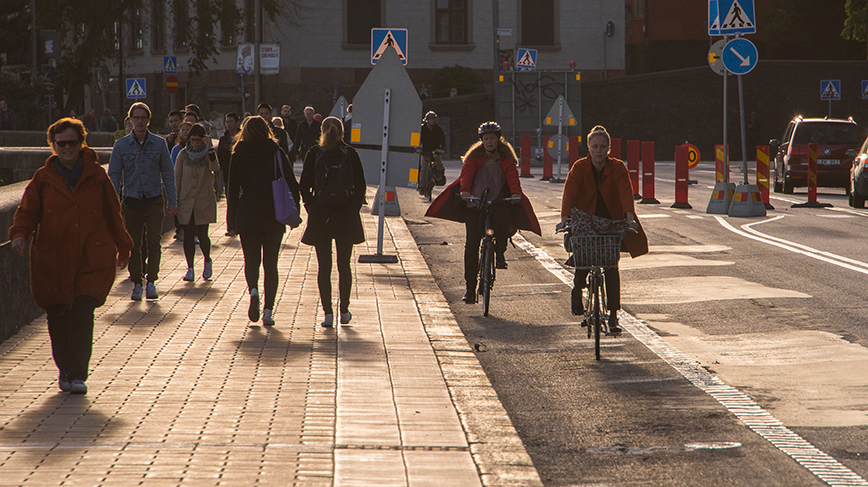“Driverless vehicles of the future could have an adverse impact on human health”

If autonomous vehicles become commonplace on our roads in the future, fewer people will walk or cycle while emissions will increase, according to a new research study.
“More people will take the car even for short journeys, such as to school or the local supermarket. And the combination of more sedentary lifestyles and higher pollution will led to a deterioration in public health,” says KTH researcher Erik Almlöf.
What impact will autonomous technology have on Stockholm’s transport system?
A group of KTH researchers asked themselves this question, and early October saw the publication of a study entitled
“Will leisure trips be more affected than work trips by autonomous technology? Modelling self-driving public transport and cars in Stockholm, Sweden.”
in the scientific journal Transportation Research Part A.
“Previous research into autonomous technology has focused on how the technology can be realised, looking at how it will make commuting for work easier. Our conclusion was rather that leisure travel will be most heavily affected by self-driving traffic in the future. It is of course great that people can get to friends and leisure activities more easily, but it could also have negative impacts in society,” says PhD student Erik Almlöf at the Integrated Transport Research Lab (ITRL) at KTH.

According to the study, people living in suburbs and peri-urban municipalities in particular are likely to choose self-driving technology if it becomes a readily available mode of transport.
Also, it is children and young people who will increasingly be able to choose driverless vehicles over walking or cycling.
“I don’t think anyone wants a future where children, say, always take a self-driving car to school or a friend’s house rather than cycling. Children should be given every opportunity to be active,” says Almlöf.
In light of the study’s findings, he would urge politicians and decision-makers to prioritise more overarching urban planning, rather than transport planning as an isolated area.
“As a society, we need to think about how we actually want to use autonomous technology. We can’t ban motor traffic, it does have a place after all. But pedestrian and cycle traffic has one too, and it has positive side effects.”
He also points out that more vehicle traffic means more noise and higher emissions.
“We won’t be moving in a sustainable direction at all if, as a society, we welcome all self-driving technology without questioning it. I think we need to look carefully at the long-term consequences, the real societal effects.”
In the next stage of the research project, Almlöf is planning to study self-driving buses operating in Barkarby outside Stockholm, and interview passengers and bus drivers about their experience of the new technology.
“In previous studies I’ve seen, users have either been ‘really scared’ or found the technology exciting. I want to dig a bit deeper into citizens’ attitudes and find out what they really think. It’s bound to be far more nuanced than simply negative and positive.”
What negative scenarios do you think could be avoided if there was controlled access to self-driving vehicles on the roads?
“We wouldn’t have urban environments with motor traffic everywhere, instead we’d have vibrant environments where people come together. We’d have cleaner cities, with citizens actively mobile out on the streets.”
Text: Katarina Ahlfort
Photo: Sten-Åke Stenberg/Mostphotos
